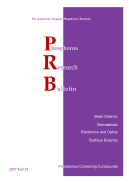Volume 2
Displaying 1-14 of 14 articles from this issue
- |<
- <
- 1
- >
- >|
-
1992Volume 2 Pages 1-11
Published: 1992
Released on J-STAGE: October 29, 2012
Download PDF (804K) -
1992Volume 2 Pages 13-16
Published: 1992
Released on J-STAGE: October 29, 2012
Download PDF (310K) -
1992Volume 2 Pages 17-20
Published: 1992
Released on J-STAGE: October 29, 2012
Download PDF (762K) -
1992Volume 2 Pages 21-26
Published: 1992
Released on J-STAGE: October 29, 2012
Download PDF (820K) -
1992Volume 2 Pages 27-32
Published: 1992
Released on J-STAGE: October 29, 2012
Download PDF (696K) -
1992Volume 2 Pages 33-38
Published: 1992
Released on J-STAGE: October 29, 2012
Download PDF (674K) -
1992Volume 2 Pages 39-44
Published: 1992
Released on J-STAGE: October 29, 2012
Download PDF (461K) -
1992Volume 2 Pages 45-50
Published: 1992
Released on J-STAGE: October 29, 2012
Download PDF (558K) -
1992Volume 2 Pages 51-56
Published: 1992
Released on J-STAGE: October 29, 2012
Download PDF (563K) -
1992Volume 2 Pages 57-62
Published: 1992
Released on J-STAGE: October 29, 2012
Download PDF (474K) -
1992Volume 2 Pages 63-68
Published: 1992
Released on J-STAGE: October 29, 2012
Download PDF (800K) -
1992Volume 2 Pages 69-74
Published: 1992
Released on J-STAGE: October 29, 2012
Download PDF (667K) -
1992Volume 2 Pages 75-80
Published: 1992
Released on J-STAGE: October 29, 2012
Download PDF (374K) -
1992Volume 2 Pages 81-86
Published: 1992
Released on J-STAGE: October 29, 2012
Download PDF (753K)
- |<
- <
- 1
- >
- >|
